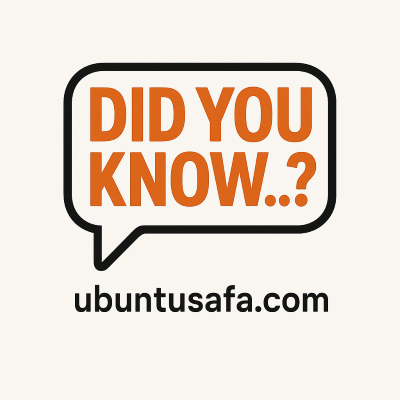The wealth of Mali, Songhai, and Ghana empires—especially under Mansa Musa.
The Wealth of the Mali, Songhai, and Ghana Empires: Africa’s Golden Age:-
For centuries, West Africa was home to some of the richest and most powerful empires in history.
The Ghana, Mali, and Songhai empires built vast wealth through control of trade routes, abundant natural resources—especially gold—and sophisticated governance.
These empires not only shaped regional economies but also had lasting influence on global history.
Ghana Empire (c. 300 – 1200 AD)
Often called the “Land of Gold,” the Ghana Empire was the earliest of the great West African kingdoms. Located in what is today southeastern Mauritania and western Mali, Ghana controlled major trans-Saharan trade routes. They traded gold, ivory, and kola nuts for salt, cloth, and other goods from North Africa.
Gold Wealth: Ghana’s control over gold mines made it one of the richest empires of its time.
Trade Monopoly: Ghana taxed merchants traveling through its territory, creating steady revenue.
Political Power: Its rulers, known as Ghana or “war chiefs,” maintained a strong military and centralized government.
Mali Empire (c. 1235 – 1600 AD)
The Mali Empire rose after Ghana's decline, expanding even further. Mali became legendary for its wealth, culture, and Islamic scholarship.
Mansa Musa: Mali’s most famous ruler (1312–1337), Mansa Musa, is often considered the richest person in history. His legendary pilgrimage to Mecca in 1324 showcased Mali’s immense wealth—he reportedly distributed so much gold on the journey that it caused inflation in the regions he passed through.
Gold and Salt: Mali controlled the gold mines of Bambuk and Bure, as well as important salt mines in Taghaza, making it a hub of economic power.
Cultural Center: Timbuktu and Djenné flourished as centers of learning, housing famous universities and libraries.
Trade Networks: Mali’s strategic location allowed it to dominate trade routes connecting sub-Saharan Africa with North Africa and beyond.
Songhai Empire (c. 1430 – 1591 AD)
Following Mali’s decline, the Songhai Empire rose to dominate West Africa’s political and economic landscape.
Trade and Military Strength: Under rulers like Sunni Ali and Askia Muhammad, Songhai expanded its territory and controlled key trade routes along the Niger River.
Wealth from Commerce: Songhai’s wealth came from taxing trade in gold, salt, and other goods, as well as agriculture and fishing.
Cultural Influence: Like Mali, Songhai invested in Islamic education and governance, making cities like Gao and Timbuktu cultural centers.
Administrative Innovation: Askia Muhammad reorganized the empire’s administration and expanded its influence through diplomacy and military campaigns.
Mansa Musa’s Legacy: The Richest Man in History
Mansa Musa’s reign marked the peak of Mali’s wealth and influence. His pilgrimage to Mecca not only displayed Mali’s riches but also connected West Africa to the broader Islamic world culturally and economically.
Economic Impact: His lavish spending and generous distribution of gold on his journey reportedly disrupted economies, demonstrating the sheer scale of his wealth.
Religious and Cultural Impact: Mansa Musa invested in building mosques, madrasas, and promoting Islamic scholarship, especially in Timbuktu.
Global Recognition: His wealth and pilgrimage put Mali on medieval maps and attracted scholars, traders, and travelers from across the world.
Conclusion
The Ghana, Mali, and Songhai empires exemplify Africa’s rich pre-colonial history of wealth, governance, and culture.
Their control of gold and trade routes made them global players long before European colonization.
Mansa Musa’s legendary riches symbolize a golden age of African civilization that still inspires pride today.
The Wealth of the Mali, Songhai, and Ghana Empires: Africa’s Golden Age:-
For centuries, West Africa was home to some of the richest and most powerful empires in history.
The Ghana, Mali, and Songhai empires built vast wealth through control of trade routes, abundant natural resources—especially gold—and sophisticated governance.
These empires not only shaped regional economies but also had lasting influence on global history.
Ghana Empire (c. 300 – 1200 AD)
Often called the “Land of Gold,” the Ghana Empire was the earliest of the great West African kingdoms. Located in what is today southeastern Mauritania and western Mali, Ghana controlled major trans-Saharan trade routes. They traded gold, ivory, and kola nuts for salt, cloth, and other goods from North Africa.
Gold Wealth: Ghana’s control over gold mines made it one of the richest empires of its time.
Trade Monopoly: Ghana taxed merchants traveling through its territory, creating steady revenue.
Political Power: Its rulers, known as Ghana or “war chiefs,” maintained a strong military and centralized government.
Mali Empire (c. 1235 – 1600 AD)
The Mali Empire rose after Ghana's decline, expanding even further. Mali became legendary for its wealth, culture, and Islamic scholarship.
Mansa Musa: Mali’s most famous ruler (1312–1337), Mansa Musa, is often considered the richest person in history. His legendary pilgrimage to Mecca in 1324 showcased Mali’s immense wealth—he reportedly distributed so much gold on the journey that it caused inflation in the regions he passed through.
Gold and Salt: Mali controlled the gold mines of Bambuk and Bure, as well as important salt mines in Taghaza, making it a hub of economic power.
Cultural Center: Timbuktu and Djenné flourished as centers of learning, housing famous universities and libraries.
Trade Networks: Mali’s strategic location allowed it to dominate trade routes connecting sub-Saharan Africa with North Africa and beyond.
Songhai Empire (c. 1430 – 1591 AD)
Following Mali’s decline, the Songhai Empire rose to dominate West Africa’s political and economic landscape.
Trade and Military Strength: Under rulers like Sunni Ali and Askia Muhammad, Songhai expanded its territory and controlled key trade routes along the Niger River.
Wealth from Commerce: Songhai’s wealth came from taxing trade in gold, salt, and other goods, as well as agriculture and fishing.
Cultural Influence: Like Mali, Songhai invested in Islamic education and governance, making cities like Gao and Timbuktu cultural centers.
Administrative Innovation: Askia Muhammad reorganized the empire’s administration and expanded its influence through diplomacy and military campaigns.
Mansa Musa’s Legacy: The Richest Man in History
Mansa Musa’s reign marked the peak of Mali’s wealth and influence. His pilgrimage to Mecca not only displayed Mali’s riches but also connected West Africa to the broader Islamic world culturally and economically.
Economic Impact: His lavish spending and generous distribution of gold on his journey reportedly disrupted economies, demonstrating the sheer scale of his wealth.
Religious and Cultural Impact: Mansa Musa invested in building mosques, madrasas, and promoting Islamic scholarship, especially in Timbuktu.
Global Recognition: His wealth and pilgrimage put Mali on medieval maps and attracted scholars, traders, and travelers from across the world.
Conclusion
The Ghana, Mali, and Songhai empires exemplify Africa’s rich pre-colonial history of wealth, governance, and culture.
Their control of gold and trade routes made them global players long before European colonization.
Mansa Musa’s legendary riches symbolize a golden age of African civilization that still inspires pride today.
3 months ago

